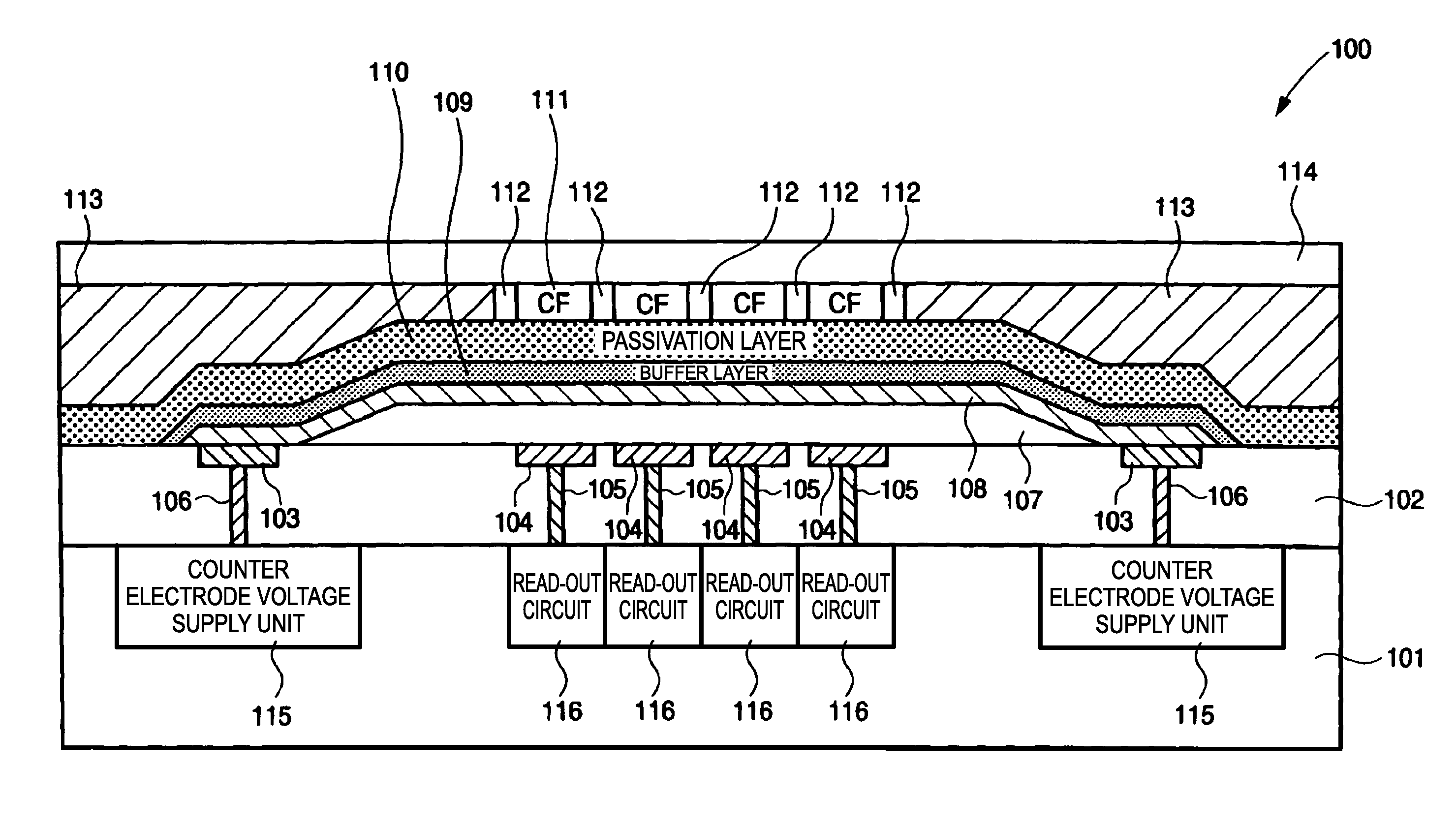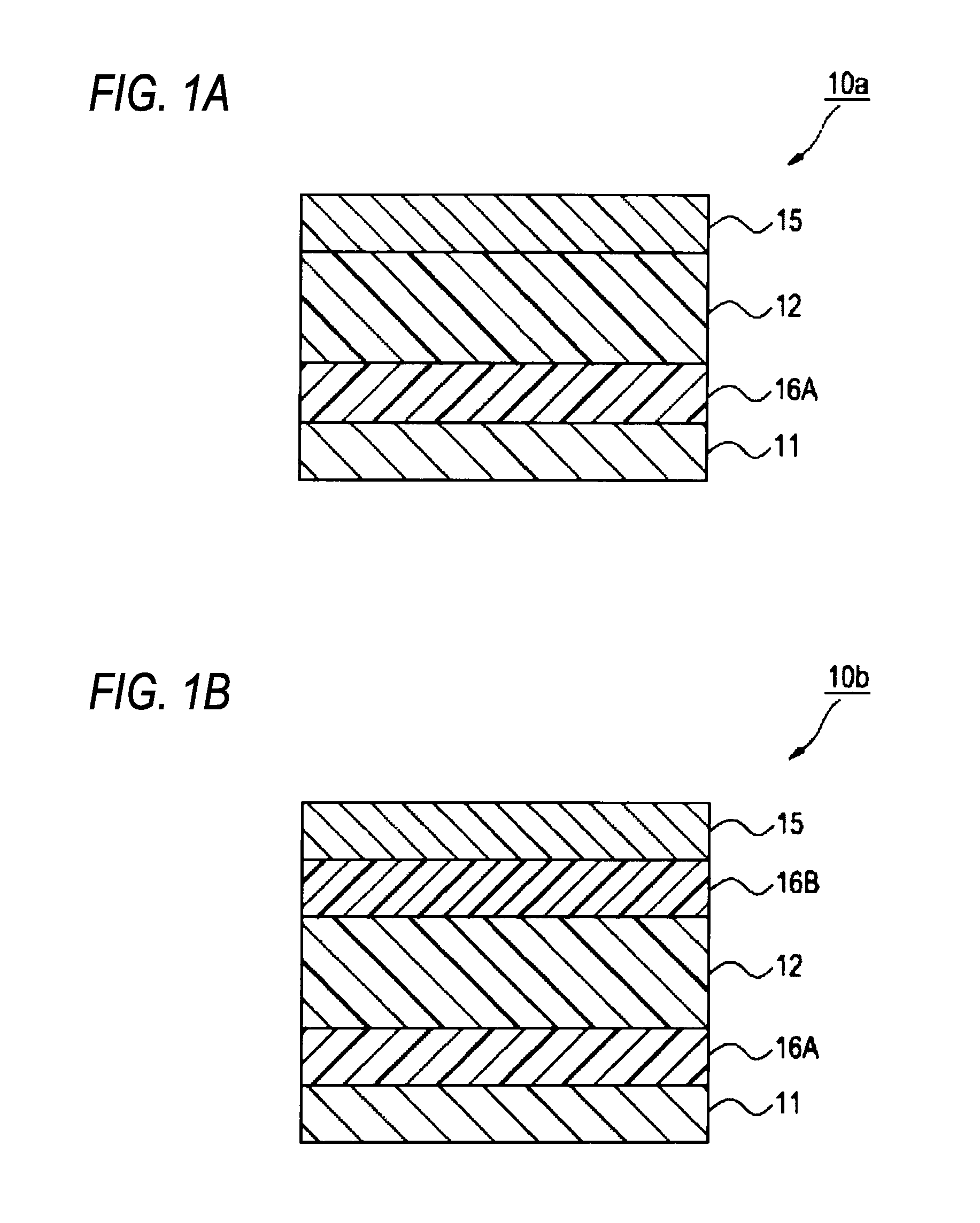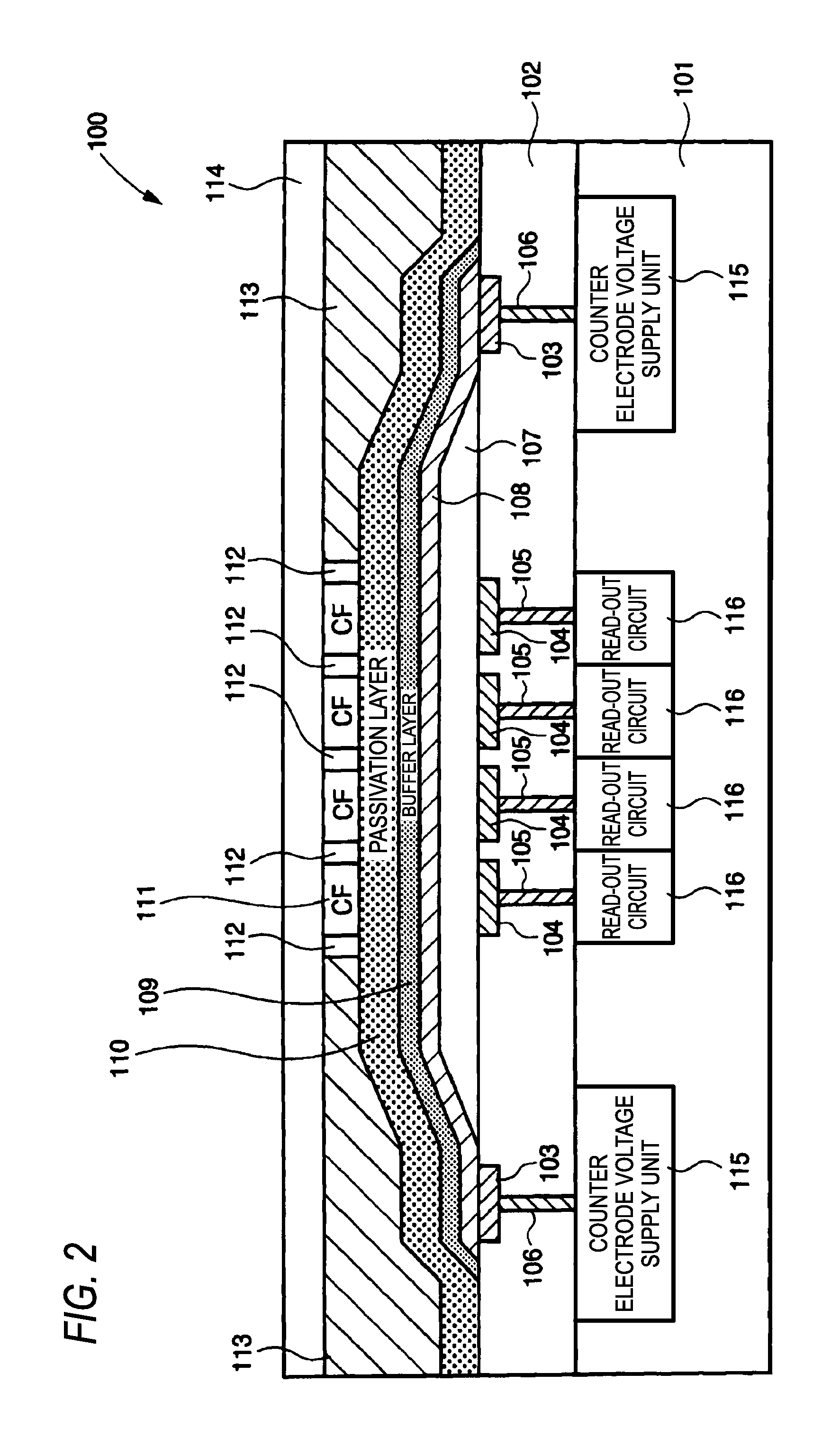Photoelectric conversion material, film containing the material, photoelectric conversion device, method for preparing photoelectric conversion device, method for using photoelectric conversion device, photosensor and imaging device
a technology of photoelectric conversion and conversion device, which is applied in thermoelectric devices, triarylamine dyes, methine/polymethine dyes, etc., can solve the problems of low light utilization efficiency, small photodiode parts, and insufficient light transmission through color filters. , to achieve the effect of high charge collection efficiency, low dark current property, and high speed response property
- Summary
- Abstract
- Description
- Claims
- Application Information
AI Technical Summary
Benefits of technology
Problems solved by technology
Method used
Image
Examples
example 1-1
[0459]A solid-state imaging device including a photoelectric conversion device having a configuration as, illustrated in FIG. 2 was fabricated. Here, the photoelectric conversion device was constituted with a lower electrode (104), a photoelectric conversion film (107) and an upper electrode (108), and an organic photoelectric conversion film including a photoelectric conversion layer and an electron blocking layer was formed as the photoelectric conversion film (107). That is, amorphous ITO of 30 nm was formed on a glass substrate by a sputtering method to fabricate a lower electrode. Compound (B-1) of 100 nm was formed by a vacuum heating deposition method to form an electron blocking layer. Further, thereon, a layer, which was formed by co-depositing Compound (A-1) and fullerene (C60) so as to be 100 nm and 300 nm, respectively, in terms of a single layer, was formed by a vacuum heating deposition in a state where the temperature of the substrate was controlled to 25° C. to form ...
examples 1-2 to 1-26
and Comparative Examples 1-1 to 1-6
[0460]Photoelectric conversion devices were fabricated in the same manner as in Example 1-1, except that, and compounds (B-1) and (A-1) used in the electron blocking layer and the photoelectric conversion material were changed as shown in Table 2.
[Evaluation]
[0461]Each of the devices obtained was checked whether it functions as a photoelectric conversion device. It is confirmed that, when voltage is applied to the lower electrode and the upper electrode of each of the devices obtained so as to be an electric field strength of 2.5×105 V / cm, any devices show a dark current of 100 nA / cm2 or less in a dark place, but show a current of 10 μA / cm2 or more in a bright place, thereby functioning as a photoelectric conversion device.
[0462]The relative response speed (a vertical rise time with a signal strength of from 0% to 90%) (a relative value when the 1st batch in Example 1-1 is counted as 1) when an electric filed of 2×105 V / cm was applied to the photoe...
example 2-1
[0467]A solid-state imaging device including a photoelectric conversion device having a configuration as illustrated in FIG. 2 was fabricated. Here, the photoelectric conversion device was constituted with a lower electrode (104), a photoelectric conversion film (107) and an upper electrode (108), and an organic photoelectric conversion film including a photoelectric conversion layer and an electron blocking layer was formed as the photoelectric conversion film (107). That is, amorphous ITO of 30 nm was formed on a glass substrate by a sputtering method to fabricate a lower electrode. Compound (B-1) of 100 nm was formed by a vacuum heating deposition method to form an electron blocking layer. Further, thereon, a layer, which was formed by co-depositing Compound (A-1) and fullerene (C60) so as to be 100 nm and 300 nm, respectively, in terms of a single layer, was formed by a vacuum heating deposition in a state where the temperature of the substrate was controlled to 25° C. to form a...
PUM
| Property | Measurement | Unit |
|---|---|---|
| Temperature | aaaaa | aaaaa |
| Nanoscale particle size | aaaaa | aaaaa |
| Nanoscale particle size | aaaaa | aaaaa |
Abstract
Description
Claims
Application Information
 Login to View More
Login to View More - R&D
- Intellectual Property
- Life Sciences
- Materials
- Tech Scout
- Unparalleled Data Quality
- Higher Quality Content
- 60% Fewer Hallucinations
Browse by: Latest US Patents, China's latest patents, Technical Efficacy Thesaurus, Application Domain, Technology Topic, Popular Technical Reports.
© 2025 PatSnap. All rights reserved.Legal|Privacy policy|Modern Slavery Act Transparency Statement|Sitemap|About US| Contact US: help@patsnap.com



